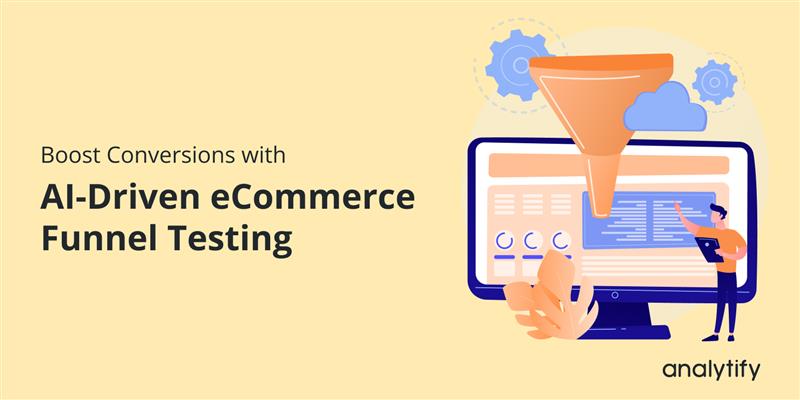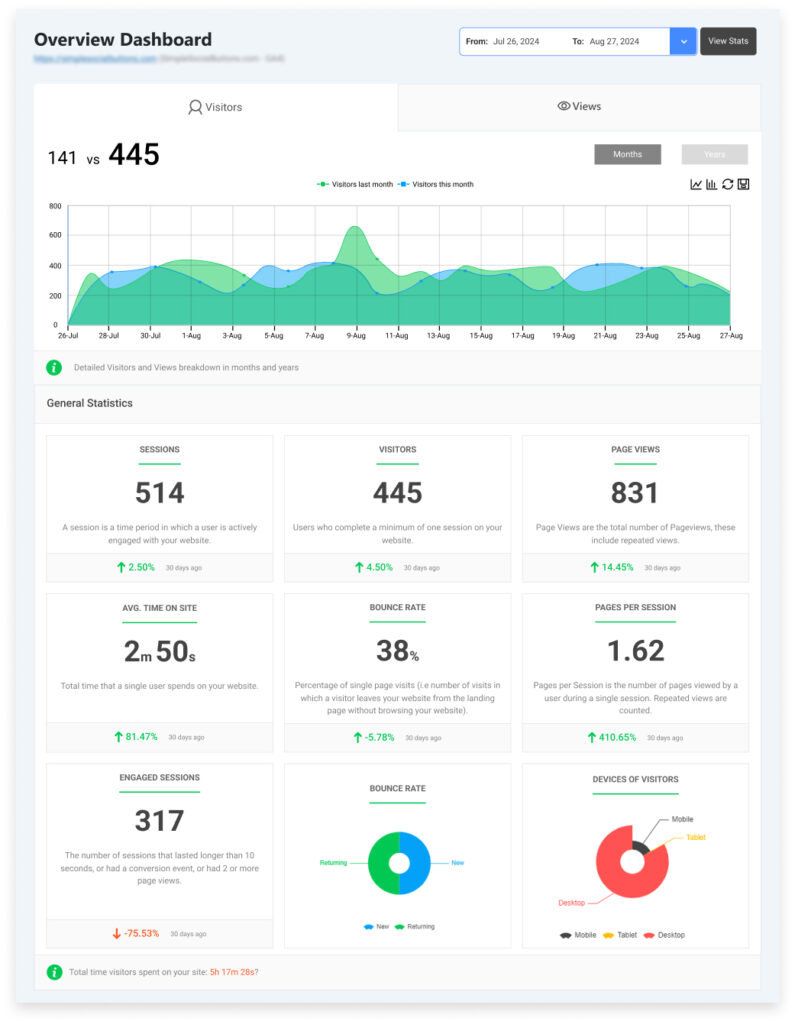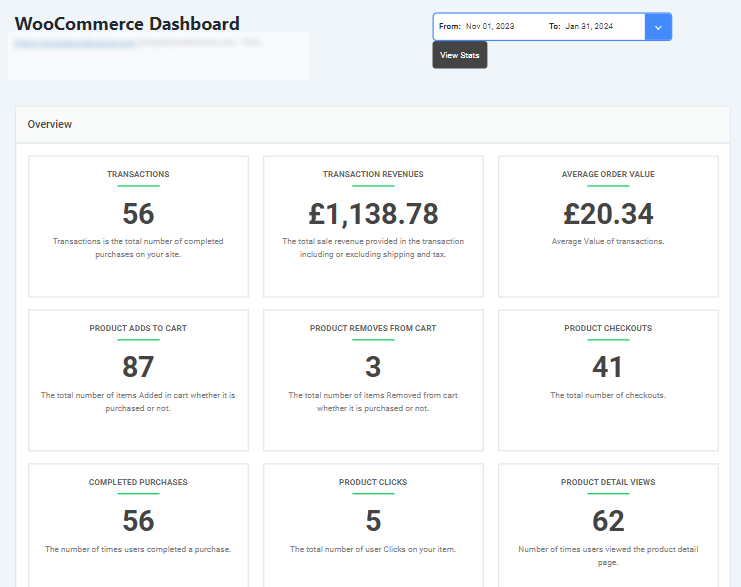
AI-Driven Testing of eCommerce Funnels via Plugins (2025)
Are you struggling to convert visitors into customers on your eCommerce site? Understanding where users drop off in the sales funnel can be tricky, and traditional methods like A/B testing often take too long to yield results.
AI-driven eCommerce funnel testing can help solve this problem. By using artificial intelligence, you can quickly pinpoint friction points, optimize your funnel in real time, and ultimately drive higher conversions.
In this guide, we’ll show you how AI can transform your eCommerce funnel, allowing for smarter, faster testing and continuous optimization.
AI-Driven eCommerce Funnel Testing (TOC):
What is an eCommerce Funnel?
An eCommerce funnel represents the step-by-step journey a user takes from first visiting a website to completing a purchase. It typically includes stages like awareness, consideration, intent, and conversion. The funnel narrows as users move closer to purchasing, with each stage presenting potential drop-off points.
Key Stages of the Funnel
Let’s understand the stages of the funnel.
- Awareness: Users land on the website through ads, search engines, or social media.
- Consideration: They browse product pages, compare options, and engage with content.
- Intent: Items are added to the cart, and users proceed to checkout.
- Conversion: The final step, completing the purchase.
Each of these stages must be seamless, fast, and user-friendly to keep prospects moving forward.
Why eCommerce Funnel Testing Matters?
Testing your eCommerce funnel isn’t just a best practice; it’s essential. Even the most visually appealing store can lose sales if the user journey is broken or confusing. Funnel testing helps uncover where potential customers drop off and why, enabling you to fix issues before they impact your bottom line.
Small Frictions, Big Losses
Every step in your eCommerce funnel is a potential exit point. A slightly confusing navigation menu, a delayed page load, or an extra form field can be enough to drive users away. Studies show that even a 1-second delay in page load time can reduce conversions by up to 7%. Without testing, these friction points often go unnoticed until they’ve already cost you significant revenue.
Visibility Into User Behavior
Funnel testing provides deep visibility into how users move through your website. It shows where they engage, hesitate, or drop off. By analyzing this data, businesses can make informed decisions to improve page design, messaging, layout, or even pricing strategy.
Maximizing ROI from Traffic
Attracting traffic through SEO, ads, or social media takes effort and investment. Funnel testing ensures that you’re getting the most out of that traffic by converting visitors into paying customers. It helps optimize the buyer journey, reduce cart abandonment, and increase average order value.
Continuous Improvement
Consumer behavior is dynamic. What works today may not work tomorrow. Ongoing funnel testing, especially when powered by AI, enables businesses to adapt quickly, ensuring the customer experience evolves with user expectations.
Traditional eCommerce Funnel Testing vs. AI-Driven Testing
Testing has always played a key role in improving eCommerce funnels, but the tools and methods have evolved. Traditional testing methods like A/B testing and manual analytics offer value, but they come with limitations. AI-driven testing, on the other hand, brings speed, scalability, and smarter insights to the process.
Traditional Funnel Testing
Let’s take a quick look at the traditional methods used for eCommerce funnel optimization. While these techniques have been effective in the past, they come with limitations that can slow down the process and hinder long-term improvements. Here’s a look at how traditional funnel testing works and why AI is changing the game.
● Manual Setup: Requires creating variations manually and defining metrics.
● A/B Testing: Tests two versions against each other, but can be time-consuming.
● Static Analysis: Relies on past data, often missing real-time behavioral shifts.
● Limited Personalization: Cannot adapt based on individual user behavior.
● Slower Iteration: Changes depend on long testing cycles and manual analysis.
● Basic Quality Assurance: Traditional methods often involve limited quality assurance steps, relying on manual reviews rather than automated issue detection.
AI-Driven Funnel Testing
Now that we’ve explored the traditional testing methods, let’s look into how AI-driven funnel testing takes things to the next level. With AI, you can optimize your eCommerce funnel more efficiently by leveraging real-time insights, predictive analysis, and automation.
Let’s look at how AI transforms the testing process and brings smarter, faster results.
● Automated Insights: Uses machine learning to detect friction points automatically.
● Predictive Analysis: Forecasts user drop-offs before they happen.
● Dynamic Personalization: Tailors experiences in real time based on user data.
● Generative Scenarios: Creates new test variations on the fly using generative AI testing tools.
● Continuous Optimization: Learns from user behavior and adjusts funnel elements continuously.
While traditional methods laid the groundwork for testing, AI-driven approaches are redefining what’s possible. They allow businesses to optimize faster, personalize better, and make smarter decisions without guesswork.
Enhance Funnel Testing with AI and GA4 Data
While AI-driven testing provides real-time insights, accurate data is essential for AI to optimize effectively. This is where tools like Google Analytics 4 (GA4) come in. GA4 helps track the user journey through the eCommerce funnel, from awareness to conversion, giving you the raw data needed to identify friction points.
By combining GA4’s funnel tracking with AI-powered testing, you can take data-backed insights and turn them into actionable, AI-driven optimizations. With GA4, you can track key stages of the funnel, while AI tools help automate the process of identifying and fixing issues to improve conversions.
To make the most of GA4 data, Analytify simplifies the process for WordPress users by providing clear, easy-to-read reports directly in your WordPress dashboard. Analytify integrates seamlessly with GA4, turning complex data into visual insights that are simple to interpret and act upon, helping you optimize your funnel without needing to dive into the GA4 interface.
Join 50,000+ beginners & professionals who use Analytify to simplify their Google Analytics!
With Analytify, you can easily monitor and analyze your website performance in real-time, making it easier to implement AI-driven changes and continuously improve your eCommerce funnel optimization.
With Analytify’s eCommerce tracking feature, you can effortlessly track key metrics like revenue, transactions, product performance, and conversion rates.
How Generative AI Enhances Plugin Functionality
Generative AI doesn’t just analyze data; it actively enhances what plugins can do, transforming them from passive observers into intelligent optimization engines.
Going Beyond Analytics
Most analytics plugins today, like Hotjar, VWO, or Crazy Egg, offer heatmaps, session recordings, A/B testing, and user behavior tracking. These tools give valuable insights, but interpreting the data and acting on it still requires manual effort. That’s where generative AI makes a big leap: by not just analyzing data, but also generating solutions.
Automated Variant Creation
Generative AI can automatically create multiple variations of product pages, CTAs, or checkout flows based on user behavior patterns. For example, if a plugin detects high drop-offs on the checkout page, AI can generate simplified checkout layouts and suggest them for A/B testing without developer input. This speeds up experimentation and reduces dependency on manual design or development teams.
Personalized User Journeys
Generative AI, when paired with funnel testing plugins, can tailor user journeys in real time. Based on previous sessions, purchase history, or on-site interactions, AI can dynamically adjust product recommendations, page layouts, or messaging for each visitor. This kind of contextual experience can lead to significantly higher conversion rates.
Predictive Funnel Adjustments
Unlike traditional tools that analyze what already happened, generative AI models can predict what’s likely to happen next. For instance, if a user shows hesitation signals (like repeated back-and-forth between product pages), the plugin-AI combo might proactively offer a discount or live chat prompt before the user exits.
Smarter, Faster Optimization
By turning passive analytics into active intelligence, generative AI supercharges plugin functionality. It shifts funnel testing from being a manual, time-bound process to a continuous, intelligent optimization cycle.
Best Practices for Implementing AI-Driven Testing
AI can drastically improve funnel performance, but only when implemented thoughtfully. Following best practices ensures your tools work efficiently, deliver accurate insights, and align with your business goals.
1. Choose the Right Plugin-AI Stack
Start with analytics or optimization plugins that support AI integrations or offer built-in AI features. Look for platforms that provide heatmaps, A/B testing, personalization, and predictive analytics. Popular choices include VWO, Optimizely, and Convert. Ensure they can integrate with your CMS, eCommerce platform, and data stack.
2. Define Clear Funnel Stages and KPIs
Before implementing AI-driven testing, map out your eCommerce funnel stages – awareness, product discovery, cart, and checkout. Define key metrics for each step, such as bounce rate, add-to-cart rate, and conversion rate. This helps AI models focus on the most impactful areas.
3. Validate AI Suggestions with Controlled Tests
While AI can generate powerful insights, not all suggestions will fit your audience. Use A/B or multivariate testing to validate AI-generated variants. This balances automation with human oversight and ensures data-driven decisions.
4. Embrace Continuous Optimization
AI thrives on fresh data. Regularly feed new insights into the system and avoid one-time testing mindsets. Set up automated workflows where AI can learn from user interactions and improve recommendations over time.
5. Prioritize Privacy and Compliance
When using behavioral data, always stay compliant with data privacy laws like GDPR or CCPA. Choose tools that anonymize user data and offer consent management options to maintain user trust.
With the right setup and strategy, AI-driven funnel testing can help you identify issues faster, test smarter, and convert more customers automatically.
Future of Funnel Testing with Generative AI
As generative AI continues to evolve, its role in eCommerce funnel testing is set to become even more transformative. Future developments will move beyond optimization into prediction, personalization, and automation at scale.
Autonomous AI Testing Agents
Soon, AI agents will independently run, evaluate, and iterate on tests without human intervention. These agents will continuously analyze live data, identify underperforming funnel steps, and generate optimized alternatives in real time.
Hyper-Personalized Funnels
AI will enable one-to-one funnel experiences. Instead of creating general test variations, generative models will build user-specific journeys tailored to demographics, behavior patterns, and purchase history, improving engagement and loyalty.
Multimodal Funnel Testing
With growing voice, AR/VR, and visual commerce, funnel testing will extend to multimodal platforms. AI will help test and optimize non-traditional interfaces like voice assistants, virtual stores, and live video commerce channels.
Ethical AI and Data Governance
As AI becomes more embedded, the focus on responsible AI and privacy compliance will intensify. Transparency in AI decision-making and strict data governance will become non-negotiable for sustainable adoption.
The future of funnel testing isn’t just smarter, it’s more adaptive, intuitive, and user-centric, powered by generative AI’s limitless potential.
Frequently Asked Questions
1. What is AI-driven eCommerce funnel testing?
AI-driven eCommerce funnel testing uses artificial intelligence to analyze your sales funnel, identify where users drop off, and suggest automatic improvements to optimize your funnel. This helps you make smarter decisions faster and boost your conversion rates.
2. How does eCommerce funnel optimization with AI work?
eCommerce funnel optimization with AI uses machine learning and AI tools to identify friction points and automatically adjust your funnel. AI helps improve user journeys in real-time, leading to a smoother experience and higher chances of conversion.
3. Can AI plugins for eCommerce funnel testing improve conversion rates?
Yes! AI plugins for eCommerce funnel testing can provide valuable insights into how users are interacting with your funnel. By analyzing this data, AI plugins can automatically suggest changes to your funnel, improving conversion rates and overall user experience.
4. What are the benefits of AI testing for eCommerce funnels?
AI testing for eCommerce funnels allows you to test and optimize your funnel continuously. Unlike traditional testing, AI can analyze user behavior in real-time, predict drop-offs, and recommend immediate adjustments. This results in a more efficient funnel that drives higher sales and better customer retention.
5. How can AI-driven funnel testing help my eCommerce store?
AI-driven funnel testing helps you identify issues in your sales process and provides automated solutions. By using AI to analyze user behavior and adjust your funnel dynamically, you can reduce cart abandonment, increase conversion rates, and provide a better customer experience.
AI-Driven eCommerce Funnel Testing: Final Thoughts
AI-driven ecommerce funnel testing is revolutionizing how eCommerce businesses optimize their sales funnels.
When combined with tools like Google Analytics 4 (GA4) and Analytify, you get even more valuable insights. GA4 provides the data, and Analytify makes it easy to understand and use that data directly in your WordPress dashboard. Together, they help you make smart, quick decisions to improve your funnel.
By combining generative AI with powerful analytics plugins, brands can move from reactive analysis to proactive, intelligent experimentation. This approach not only identifies friction points faster but also suggests and tests improvements automatically, boosting conversions with less manual effort. As the technology evolves, expect even more personalized, autonomous, and adaptive testing experiences.
For eCommerce teams aiming to stay ahead, adopting AI-powered testing isn’t just a competitive edge; it’s quickly becoming a necessity. Start small, integrate wisely, and let AI continuously refine your funnel for growth.
You may also like to read:
Which AI plugins were you already using for testing eCommerce funnels? Share your experience with us, we’d love to hear your thoughts.







